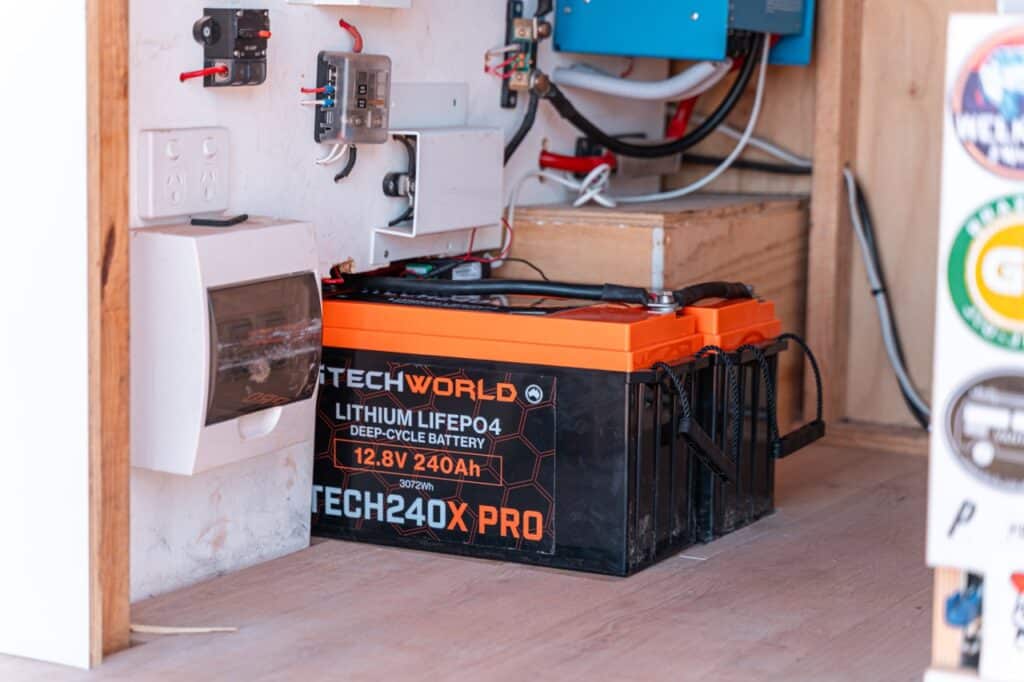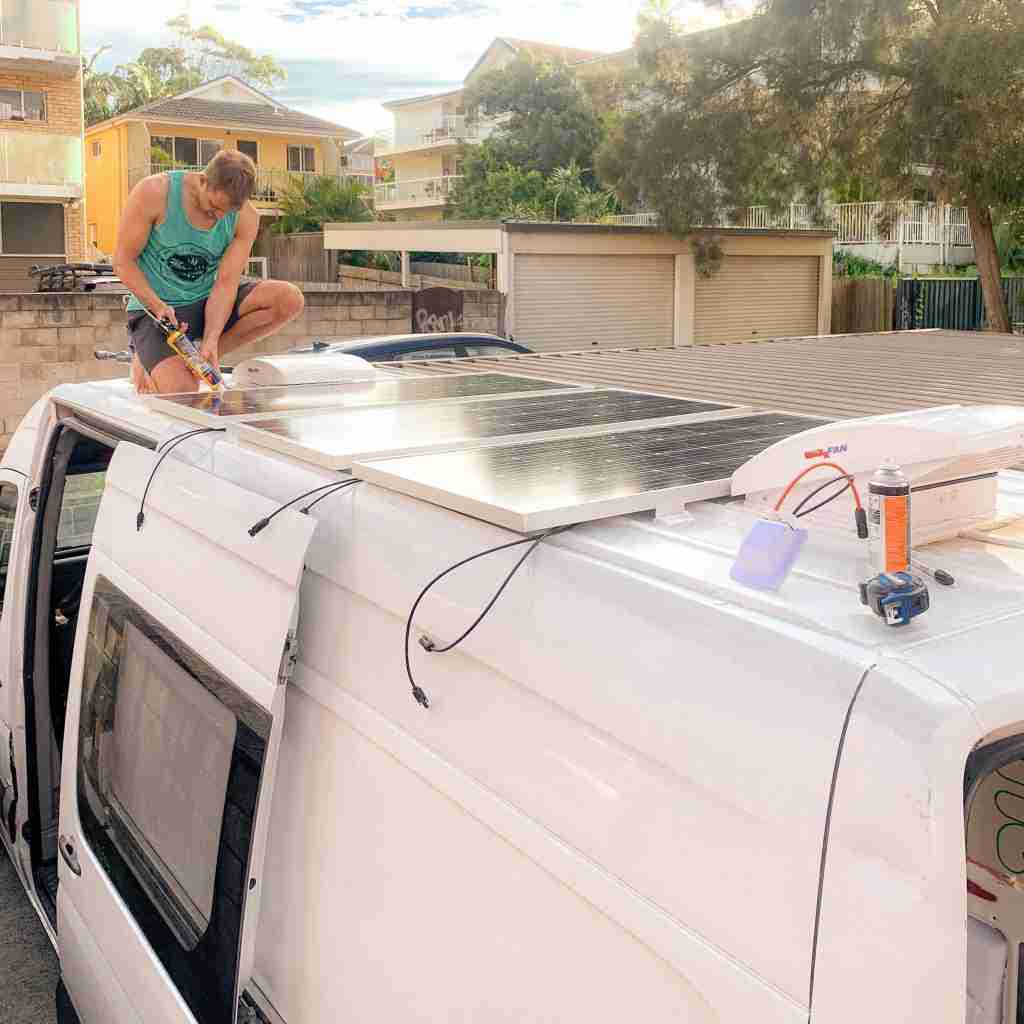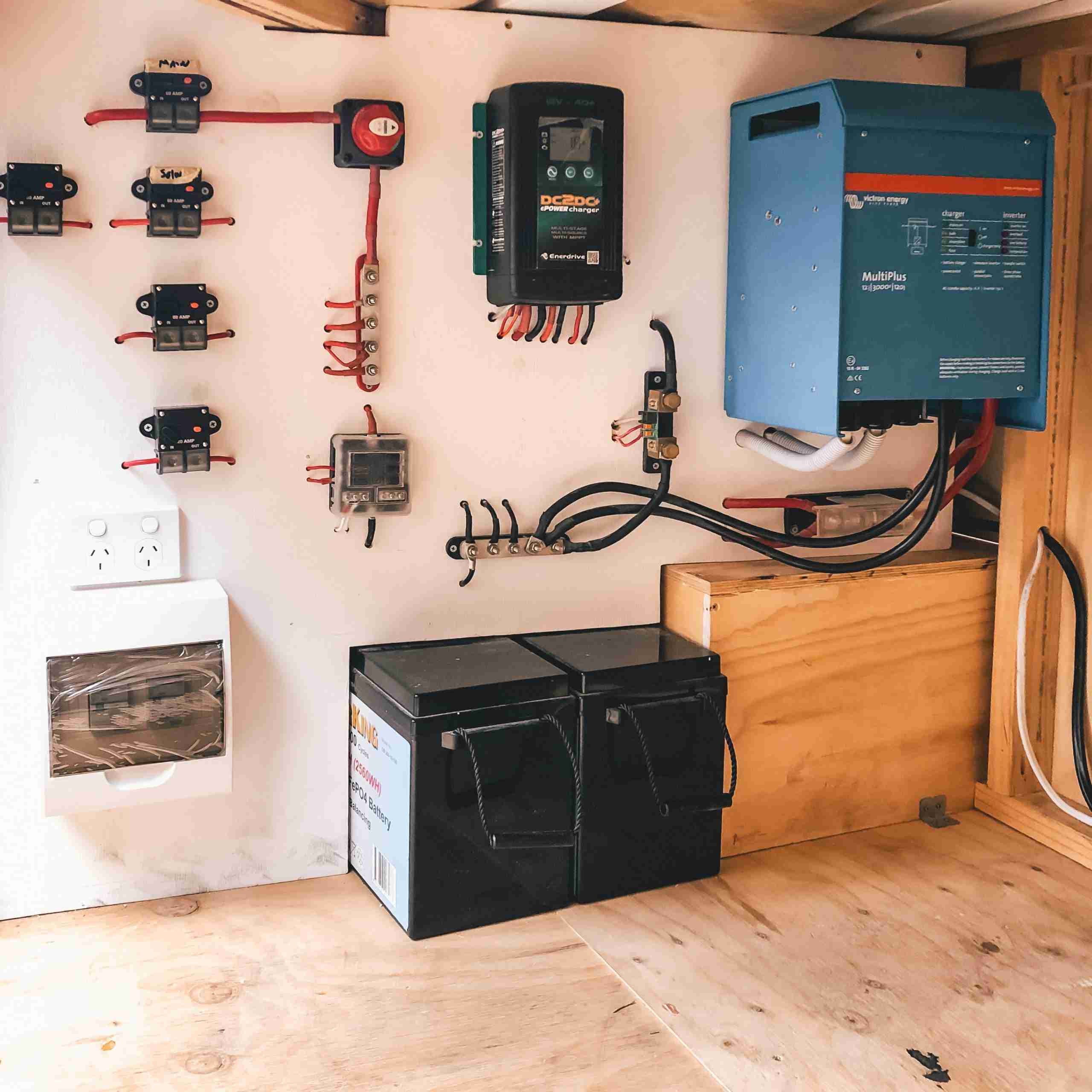What Is a DCDC Charger and Are They Worth It
Have you ever wondered, “What is a DCDC charger?” and how could you manage your power needs while on the road or at sea? The answer lies in the transformative power of DCDC chargers. These compact devices revolutionize power management in vehicles, boats, and caravans, taking your off-grid power solutions to the next level.
Short Summary
- DCDC Chargers are essential components in power systems, providing a boost charge and regulating charging/discharging to keep the battery healthy.
- DCDC chargers are highly compatible with multiple battery types & provide adjustable charging profiles for optimal performance.
- When selecting a DCDC charger, consider factors such as IP rating, solar regulating capacity & input voltages to ensure compatibility & optimal functionality.
- Short Summary
- The Role of DCDC Chargers
- How DCDC Chargers Work
- Charging Lithium Batteries
- Adapting to Various Charging Profiles
- Solar Regulator Functionality
- Combining Solar and Alternator Charging
- Determining the Proper Size and Amperage
- Evaluating Charger Features
- Proper Installation Techniques
- Maintaining Your DCDC Charger
- Comparing DCDC Chargers to Alternatives
- Determining the Best Solution
Understanding DCDC Chargers
DCDC chargers are the lifeblood of modern, off-grid power solutions. With many uses, from charging battery banks in vehicles to managing batteries in boats and caravans, these devices are for anyone wanting to stay powered up on the go. So, what makes them so special? It’s all about optimising power and extending the life of automotive components.
These chargers harness the power of the vehicle’s alternator to charge and maintain an auxiliary battery, which serves as a secondary battery. They effectively manage the output voltage to optimise battery charging, ensuring the primary battery is unaffected. This battery system is a game-changer, offering reliable power to run your appliances when needed most, thanks to the dual battery systems.
The Role of DCDC Chargers
Like the heart in a body, a DCDC charger performs essential functions in your power system. It isolates the house battery from the alternator and boosts charge from as little as 9V. Think of it as a personal trainer for your battery, ensuring it gets the optimal workout to stay healthy and perform at its best.
But that’s not all. Some DCDC chargers, like smart charger models, also double up as solar regulators, providing efficient charging and preventing over-discharging. This means even when your vehicle is stationary, your charger works hard to keep your battery in tip-top shape. It’s like having a 24/7 personal assistant for your battery!
How DCDC Chargers Work
So, how exactly do these chargers work? Picture a relay race. Your vehicle’s alternator is the first runner, passing the baton (or, in this case, power) to the DCDC charger. The charger then converts this power to a higher voltage for secondary batteries in a three-step process, ensuring a smooth and efficient energy transfer.
But the race doesn’t end there. The charger also watches the battery’s voltage and, in some cases, its temperature. If it detects any changes, it adjusts the charge to safely ensure the battery reaches full capacity. It’s like having a personal coach who trains you and ensures you stay safe during the race.
Compatibility with Different Battery Types
One of the most impressive features of DCDC chargers is their adaptability. Like a universal power adapter, these chargers can work with different batteries, each with their unique charging profiles. This adaptability makes them suitable for a variety of battery chemistries, including lithium batteries.
Choosing the correct charging profile is crucial for different types of batteries, and DCDC chargers can be adjusted accordingly. Think of it as a multilingual translator, able to communicate effectively with different batteries in their ‘language’. This adaptability ensures your battery is charged correctly, optimising its performance and extending its life.
Charging Lithium Batteries
Lithium batteries are becoming increasingly popular due to their high energy density and longevity. DCDC chargers can work seamlessly with these batteries, optimising battery life and extending it. This is accomplished by employing the appropriate charging profile, much like a personalised workout plan for the battery.
To ensure optimal performance, it’s recommended to use a lithium battery charger or select AGM, Gel, or sealed battery charge profiles. It’s like giving your battery a tailored diet plan, ensuring it stays healthy and performs at its best.

Adapting to Various Charging Profiles
One of the standout features of DC DC battery chargers, also known as DCDC chargers, is their ability to adapt to various charging profiles. These chargers can adjust the charge based on battery activity, voltage, and temperature, making them compatible with different battery chemistries and input voltages.
Think of it as a chameleon, changing its colour to match its surroundings. Whether you’re using an AGM, Gel, Wet, or Calcium battery, your DCDC charger can adjust its ‘colour’ to match, ensuring optimal charging and maintaining your battery’s health.
Integrating Solar Power with DCDC Chargers
Harnessing the sun’s power is a clean and renewable way to meet your energy needs. DCDC chargers can seamlessly integrate with solar power, providing a reliable and efficient power source. This feature is particularly valued by van dwellers and off-grid enthusiasts, who rely on sustainable energy sources for their power needs.
But integrating solar power with DCDC chargers goes beyond just using solar panels. These chargers are often equipped with built-in solar regulators, facilitating efficient charging and minimizing reliance on other energy sources. It’s like having a built-in solar power plant ready to harness the sun’s energy whenever needed.

Solar Regulator Functionality
Some DCDC chargers come equipped with built-in solar regulators. These regulators ensure your battery gets the optimal charge from your solar panels. It’s like a gatekeeper, ensuring only the right amount of energy enters your battery.
This feature is particularly beneficial for those who rely on solar power. A built-in solar regulator eliminates the need for a separate unit, saving space and simplifying your setup. Plus, these are not ordinary regulators. They are maximum power point trackers (MPPT) designed to optimize the performance of your solar panels.
Combining Solar and Alternator Charging
Combining solar and alternator charging can be likened to a tag team in a wrestling match. Each player has a role to play, and when they work together, they can achieve great results. DCDC chargers can reduce the load on the alternator and facilitate solar charging during extended periods of parking, providing an economical and multi-functional power solution.
This combined charging method ensures that your power needs are met, even when your vehicle is stationary. So whether you’re camping in the wilderness or parked up at a festival, you can be sure that your power needs are taken care of thanks to your DCDC charger.
Selecting the Right DCDC Charger
Choosing the correct DCDC charger is like choosing the perfect outfit. It needs to fit well, suit your style, and be appropriate for the occasion. In the case of DCDC chargers, the ‘occasion’ is your specific power needs and battery setup, and the ‘style’ is the charger’s size, amperage, and features.
Making the right choice is crucial for optimal performance and compatibility. Just as you wouldn’t wear a ball gown to a beach party, you wouldn’t choose a charger that doesn’t match your battery’s capacity. Ah, rating or your vehicle’s alternator capacity.
Determining the Proper Size and Amperage
When it comes to DCDC chargers, size does matter. The size and power of your charger depend on your energy needs and battery capacity. It’s a bit like choosing the right shoe size; you need to ensure a good fit for optimal performance.
As a general guideline, when setting up a battery bank, it is recommended to use a 75-200AH size battery. A 25-amp dual battery charger should also be included. Higher capacity requirements require a more suitable charger. A 40-amp dual battery charger is the best option.
Evaluating Charger Features
Just like shopping for a new car, you’ll want to check out the features of a DCDC charger before making your purchase. Factors to consider include:
- IP rating
- Solar regulating capacity
- Adaptability to various battery chemistries
- Input voltages
These features not only enhance the functionality of your charger but also ensure its compatibility with your battery setup. It’s like ensuring your new car has the right features for your needs, whether that’s a sunroof, leather seats, or a state-of-the-art sound system.
In the case of DC-DC charger devices, the right features ensure a smooth and efficient charging experience.
Installation and Maintenance
Just like with any electrical device, proper installation and maintenance of a DCDC charger are crucial for safety and longevity. It’s like looking after a precious piece of jewellery; you need to install it correctly and keep it in good condition to ensure it lasts.
Whether you’re a seasoned pro or a newbie to the world of DCDC chargers, knowing how to install and maintain your charger correctly is essential.
Proper Installation Techniques
Installing a DCDC charger is like assembling a piece of furniture; you need to follow the instructions carefully and use the right tools. Each step is crucial for safe and secure installation, from mounting the charger to connecting the cables.
But it’s not just about following the instructions. You also need to consider factors such as cable size and mounting location.
Maintaining Your DCDC Charger
Maintaining your DC charger is a bit like servicing your car; regular checks and cleaning can go a long way in keeping it in top condition. A well-maintained charger performs better and lasts longer, giving you more value for your money.
From inspecting the charger to keeping it free of dust and debris, these simple maintenance tasks can help detect any potential issues early. It’s like getting regular oil changes and tire rotations for your car; a little effort can save you a lot of trouble down the road.
Alternatives to DCDC Chargers
While DCDC chargers offer plenty of benefits, they’re not the only game in town. Depending on your specific needs and budget, you might find that alternatives such as manual isolators, Anderson plugs, and voltage-sensitive relays are more suitable for your setup.
Each of these alternatives has its pros and cons, much like different types of vehicles. For example, a sports car might be great for speed and style, but if you’re looking for practicality and affordability, a compact car might be a better fit.
Likewise, while DC battery chargers are great for modern smart alternators and different battery chemistries, alternatives may be sufficient for simpler setups or lower budgets.
Comparing DCDC Chargers to Alternatives
When considering alternatives to DCDC chargers, it’s important to weigh up the advantages and disadvantages of each option. DCDC chargers are highly regarded for their ability to safeguard the vehicle’s alternator and optimize the battery’s longevity.
However, alternatives such as solar panels may be a more suitable option in certain circumstances. Like choosing between a gas stove and an electric one, the best choice depends on your specific needs and circumstances.
Determining the Best Solution
Ultimately, the best solution for your power needs depends on a variety of factors, including your specific battery type and size, the power needs of your system, and your budget. It’s like choosing a vacation destination; what works best for you depends on your preferences, budget, and the time of year.
Whether you opt for a DCDC charger or an alternative solution, the key is to choose a system that provides a safe and consistent charge to your battery and is compatible with your battery’s Ah rating.
Summary
In the journey of off-grid power management, DCDC chargers are your trusted companions. They efficiently manage your power needs, work with various battery types, seamlessly integrate with solar power and can be selected and maintained with ease. While alternatives exist, the versatility and efficiency of DCDC chargers make them a worthy consideration for your power needs. As with any important decision, consider your specific needs, do your research, and choose wisely. After all, power is in your hands!

